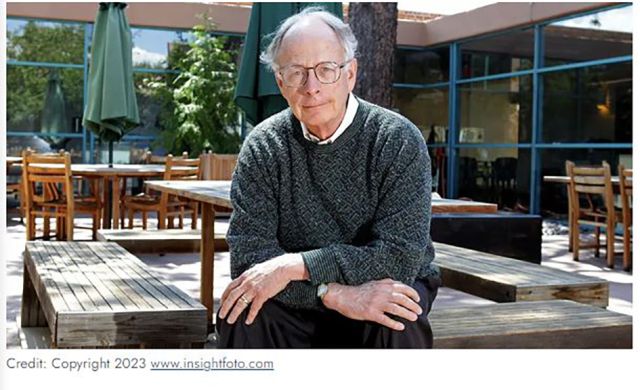Jim Hartle, 1939-2023
Giant of quantum cosmology dies at 83 - APS News

Jim Hartle, a theoretical physicist whose boundary-defying work sought to unite the quantum world with a cosmos shaped by gravity, died May 17, in Switzerland. He was 83.
“What Jim developed, more than anyone else, was a quantum mechanical way of thinking about cosmology,” says Thomas Hertog, a cosmologist at KU Leuven and a frequent collaborator of Hartle’s.
Hartle was an APS Fellow and Guggenheim Fellow, and in 1991, he was elected to the National Academy of Sciences. Despite his accomplishments — the 2009 Einstein Prize cited a “broad range of fundamental contributions to relativistic stars, quantum fields in curved spacetime, and especially quantum cosmology” — Hartle was averse to the spotlight. “He so easily could have tried to grab some of that limelight that shone on Stephen [Hawking],” says David Craig, a general relativist at Oregon State University and one of Hartle’s students. “He never did.”
Jim Hartle was born Aug. 17, 1939, in Baltimore. His parents, Anna Elizabeth Burkett Hartle and Charles James Hartle, moved frequently due to Charles’ job at IBM. During Jim’s teenage years, they returned to Baltimore, and he attended the Gilman School, learning from physics teacher Bill Porter, whom he later thanked for “starting me off on this trail.” In college at Princeton, Jim initially studied engineering but changed course after meeting theoretical physicist John Wheeler, who became a lifelong mentor — and, eventually, family. Years later, during a stint in Chicago, he asked Wheeler, “what ever happened to that attractive niece of yours?” “And Johnny said, ‘She just lives a few blocks away from here. Why don't you give her a call?’ So he did, and that was that,” says Mary Jo Wheeler Hartle, who married Jim in 1984.
At Caltech for graduate school, Hartle worked on particle physics under Murray Gell-Mann. After graduating in 1964, he briefly taught at Princeton before joining the faculty at the University of California, Santa Barbara, which he would help build into a theory powerhouse with the Institute for Theoretical Physics. In 1967, Hartle began working with Kip Thorne to calculate the dynamics of rotating neutron stars. “We would work late into the night and start again the next day,” Thorne says. The two got along so well that they organized regular gatherings between their research groups, which eventually became the Pacific Coast Gravity Meetings.